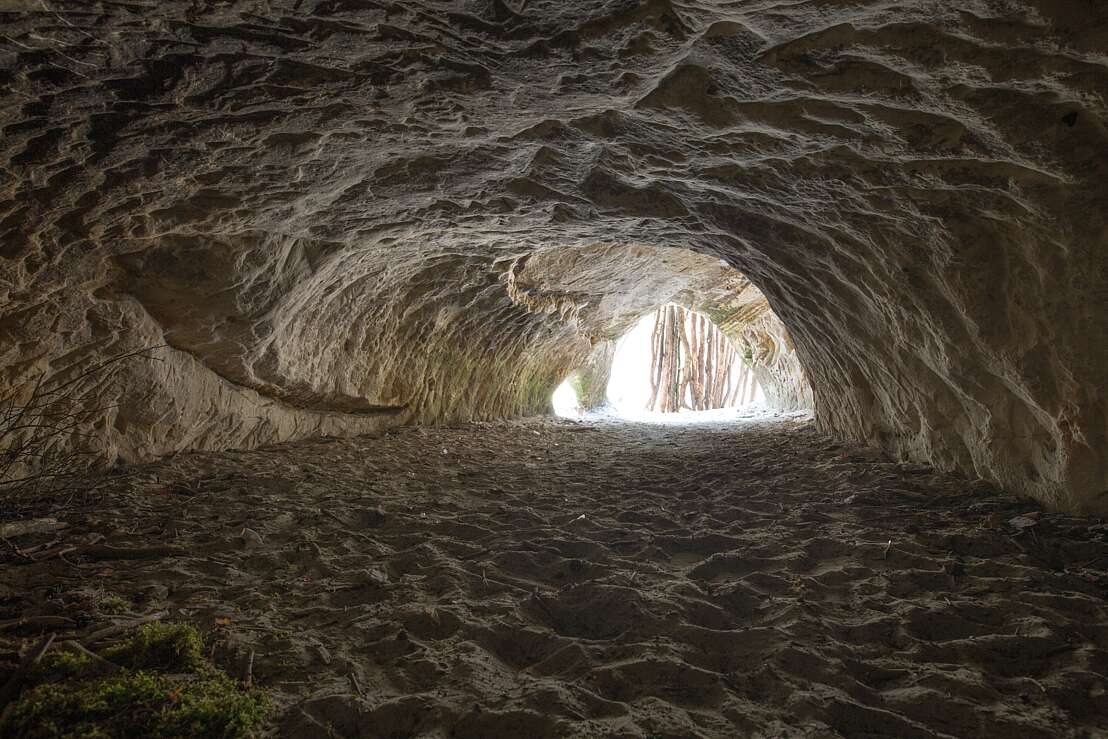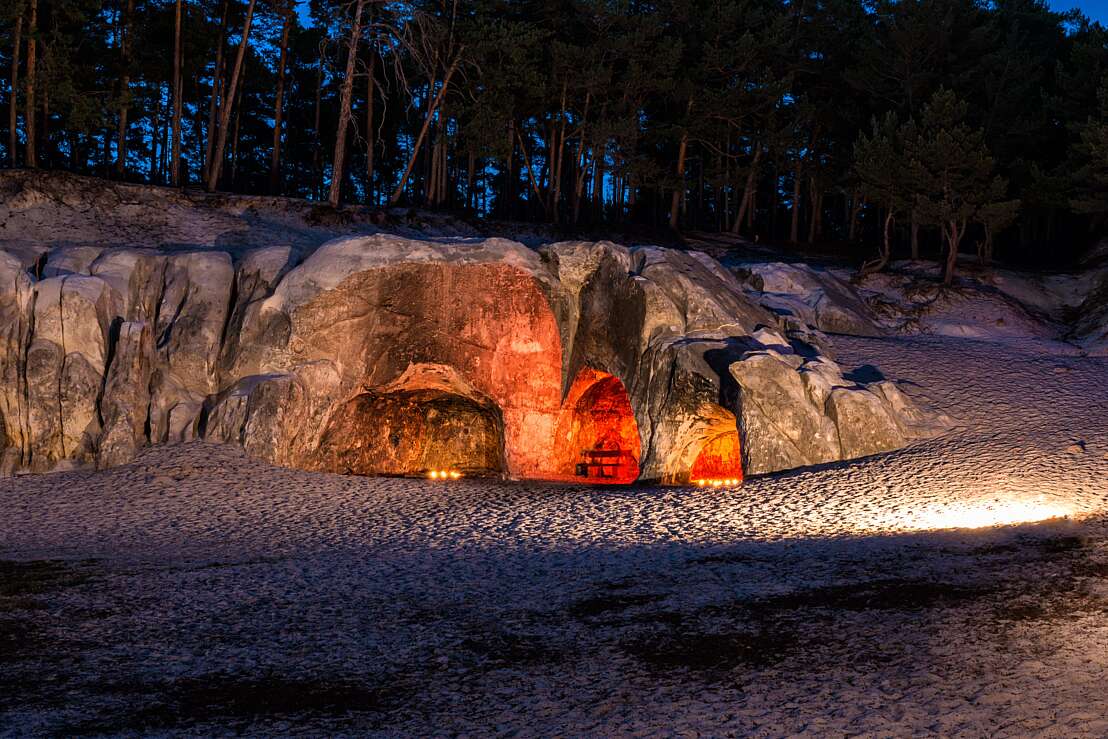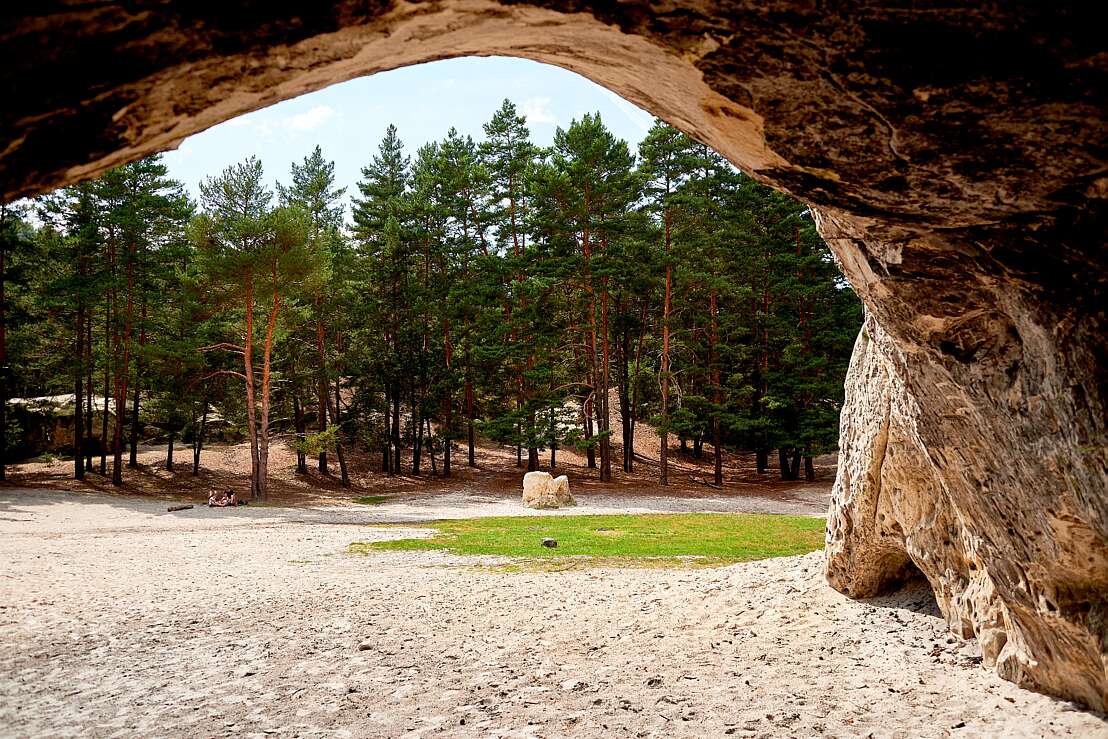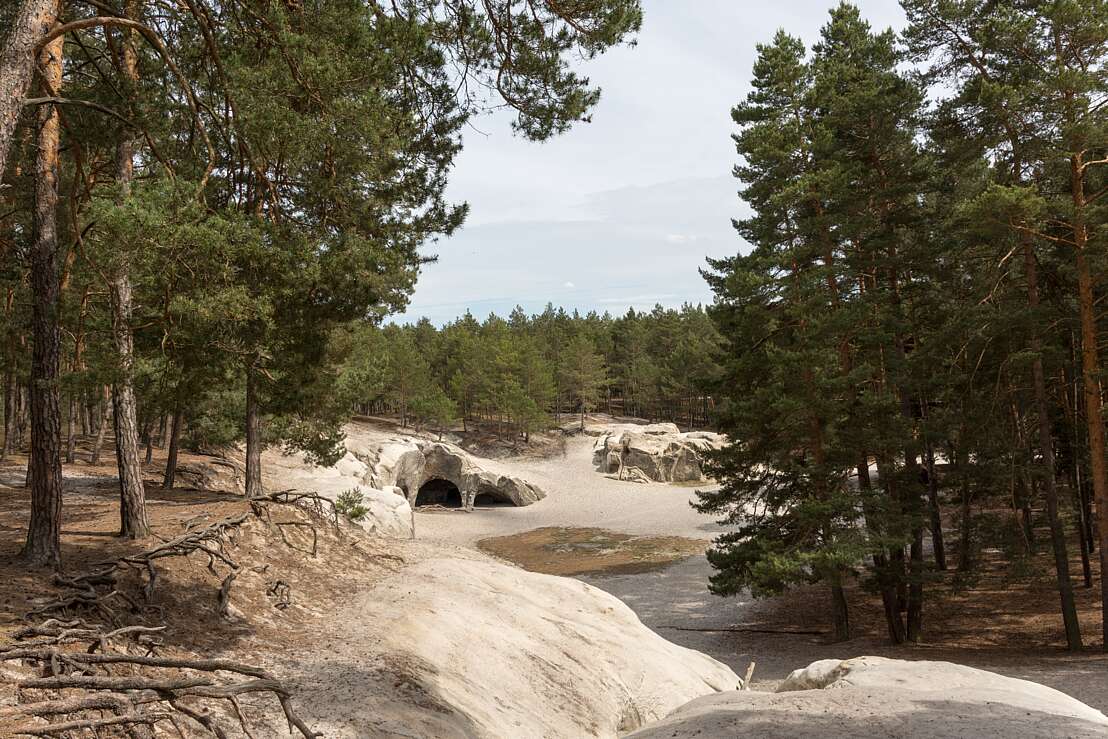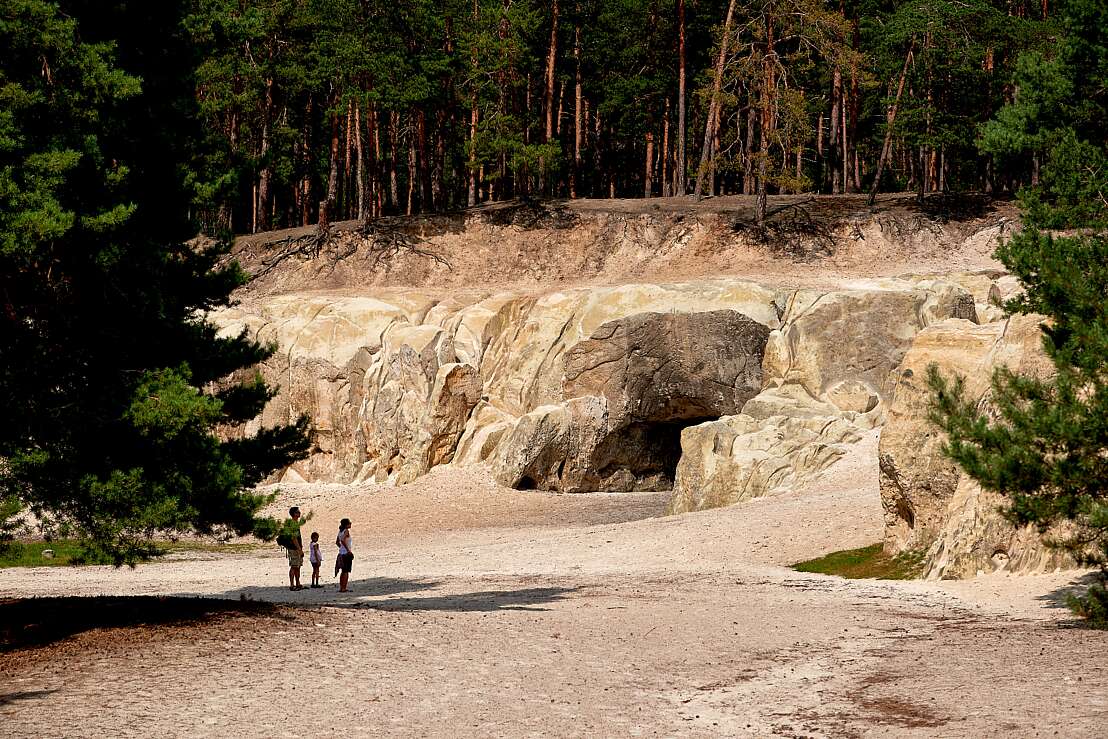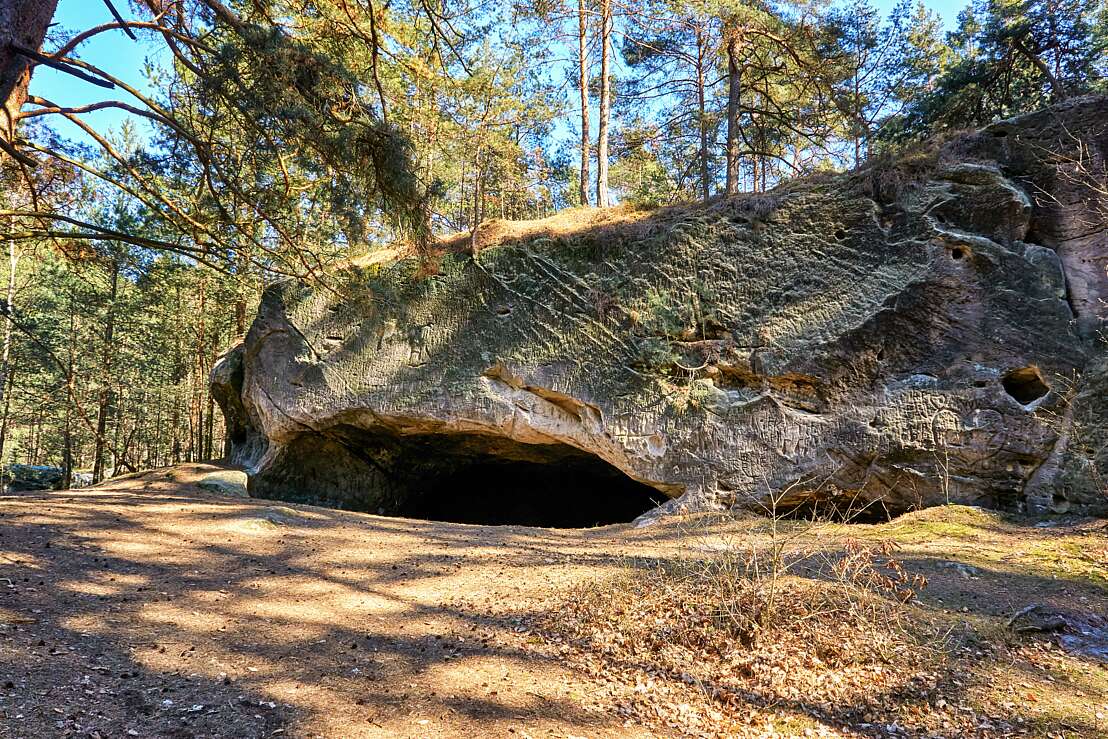Sandsteinhöhlen
Impressive caves in the middle of the pine forest
Excursion destinationsHarzspots Vacation planner
| Name | Date |
|---|
There is a particularly mystical place in the Harz district of Saxony-Anhalt. A white field the size of a football pitch stretches between pine forests. Impressive stone sand cliffs rise up between the fine sand. The large stone sand caves invite you to marvel, explore and rest. The perfect place for a hike. Would you like to find out more about this magical place? Then we have the right information for you.
A natural playground in the sandstone caves of the Heer
A special cultural landscape, the Heers, stretches along the north of Blankenburg (Harz). In the middle of the pine forest, you can admire the legendary sandstone c aves, which extend over an area the size of a football pitch. They offer explorers and climbers of all ages a huge natural adventure playground. While the little ones have a huge sandpit to dig in, older children and adults have the opportunity to explore the rocks and caves. A magical place that makes children's and adults' hearts beat faster.
These rocks with neighbouring pine forest are designated as a protected biotope and are subject to the highest European protection status NATURA 2000, which means that no paths are allowed here.
The sandstone caves in the past
A sand-covered forest clearing, large rock caves and in the middle of it all, the Dedingstein stands alone and solitary. What was the purpose of this place in the past? It is assumed that the Germanic tribes gathered here for ritual meetings in pre-Christian times. The "Ding" or "Thing" was the name given to the Germanic tribes' judicial or popular assemblies. This could explain the name Dedingstein. During the Middle Ages, quartz sand was mined as scouring sand, known as "Stubensand". The fine sand was used for cleaning and sanding wooden floorboards and as grit.
Hiking routes to the sandstone caves in the Harz Mountains
This place is a must for every hiking enthusiast. The hiking trails take you through pine forest, to the sandstone caves, which owe a certain Baltic Sea feeling to the white, fine-grained sand, and to sights such as Regenstein Castle and the Regenstein Mill. The hiking trails are signposted. Due to the protected status, which is close to that of a nature reserve, it is not permitted to leave the paths in order to ensure the preservation of flora and fauna.
Regenstein Fortress
Regenstein Castle is one of the special sights not far from the sandstone caves. The impressive fortress with its stone-carved rooms was an important and fortified castle complex. The altitude was an advantage for its defence. In the early Middle Ages, an army road ran along its northern edge. The name of the area Heers is presumably derived from this. The first records of the castle date back to 1162 and the castle survived for centuries. In 1671, the castle was turned into a fortress by the Prussians. In 1736, the castle was severely damaged by a lightning strike. It struck the powder tower.
In between, the castle went to the French in 1757. Around a year later, the Prussians rendered the fortress, which they recaptured, unusable by blowing up the powder magazine. Today, only the ruins of the medieval rock castle remain. To the east, you can clearly see the white sand of the large sandstone caves between the pine trees. From 1671, the castle had a castle well which, at over 197 metres, was one of the deepest castle wells in the world. Unfortunately, it fell victim to demolition. Visitors threw stones and sand into the well. In 1855, the depth was only around 18 metres. It was completely buried in 1885.
The Regenstein mill
To the south-west of the small sandstone caves in the Heers forest area is the Regenstein Mill, which was powered by water. It is located on a steep rock face and was used as a grinding and oil mill. In 1785, the mill buildings were blown up by order of "Old Fritz" and fell into oblivion. In the late 20th century, the ruins of the mill were uncovered by researchers. The water wheels and the moat were restored. The two large, wooden water wheels are the most striking features of the former mill complex and were renewed in 2013/2014. They have a diameter of 4-5 metres.
As you can see, a trip to the sandstone caves in the Harz Mountains is well worthwhile. A short journey into the past and into a wonderful world of adventure. In the midst of forest, beach without sea and the impressive ruins and sand caves, you can explore and marvel at a huge area in the Harz Mountains. When are you hiking to the sandstone caves?
Harzspots gives you the
Komoot Harz Region Package for free!
Use our voucher from the Outdoor Navigators Komoot and get the „"Harz Regions Package“ free of charge. From now on you can get to know all hiking and cycling routes digitally and, if you wish, also voice-guided!
